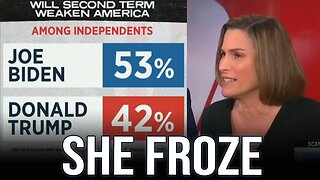Classic fairy tales and true interpretation of the perfect visual experience
Dunhuang fresco is the composing part of Dunhuang grotto art. The grotto art of Dunhuang is great and profound. Represented by Mogao Grottoes, the grotto art of Dunhuang is rich and colorful, and exist in large quantities, including frescos, painted sculptures, scriptures, scrolls and a lot of other artistic forms. Among the artistic forms, the relics of the frescos in the Mogao Grottoes are the most attractive. In the Tang Dynasty, the Mogao Grottoes had boasted more than a thousand stone grottoes. Now, 492 grottoes have been left, together with 45000 square meters of frescos in them.
The portrayed social life scenes and appearances of various people of different dynasties before the Tang Dynasty among the frescos of Dunhuang are the precious materials for researching on the clothes and customs of the people of all the ethnics in different dynasties. The frescos can be divided into Buddha statue paintings, Buddhist sutra paintings, narrative paintings, alimentation paintings, animal paintings, landscape paintings, decoration paintings and so on. The Buddha statue paintings include the portraits of various Buddha statues and Bodhisattvas while Buddhist sutra paintings, which are also called "sutra converted painting", uses the means of painting to express the contents of Buddhist sutras. The narrative paintings, however, are characterized by rich contents, vivid plots and strong traces of life, so, they are embedded with great attractiveness. Alimentation paintings are the portraits of the people who believed in Buddhism and donated funds to build grottoes, together with their relatives and servants. The beautiful natural sceneries in some of the landscape paintings are painted according to the landscapes in sutra, while some others are independent pictures that take landscapes as the main parts. There are also colorful decoration paintings, which were used to decorate the grotto buildings.
Dunhuang frescos have abundant contents, varied forms and vivid time characteristics. They reflect that the craftsmen at that time had advanced painting skills and abundant imagination power. They provide a large amount of objective materials for researching on the Chinese art history.
-
 4:14
4:14
DanielDavisDeepDive
11 hours agoThe Two Roads America Faces Today
442 -
 LIVE
LIVE
Alex Zedra
2 hours agoLIVE! Gaming on Rumble! WOOT
1,137 watching -
 39:16
39:16
Bob Menery
2 days agoBob Menery & Ryan Garcia talk about PED allegations, Connor McGregor and Awkward Topics
61K16 -
 1:05:27
1:05:27
FULL SEND PODCAST
1 day agoDeion Sanders on Being Arrested, Haters in the NCAA, and Drake vs the Entire Rap Game!
21.2K4 -

Melonie Mac
6 hours agoGo Boom Live Episode 3!
13.8K7 -
 1:29:47
1:29:47
Precision Rifle Network
10 hours agoRex & Joel Live S2E3
18.2K3 -
 1:03:16
1:03:16
The Anthony Rogers Show
13 hours agoEpisode 308 - Lessons from the Afterlife
9.05K1 -
 0:56
0:56
Memology 101
13 hours agoMSNBC "finds it SHOCKING" that voters believe Biden is a GREATER THREAT to democracy than Trump
19.4K36 -
 1:13:28
1:13:28
The Charlie Kirk Show
3 hours agoTHOUGHTCRIME Ep. 44 — Mud-Faced Millionaires? Trump Jail = Good? The Unfunny Left?
42.2K21 -
 1:53:30
1:53:30
Kim Iversen
7 hours agoBiden Confronts "Genocide Joe" Nickname, Ann Coulter Tells Vivek To His Face Only Whites Should Be President, The Great Taking w/ Chris Martenson
46.7K140